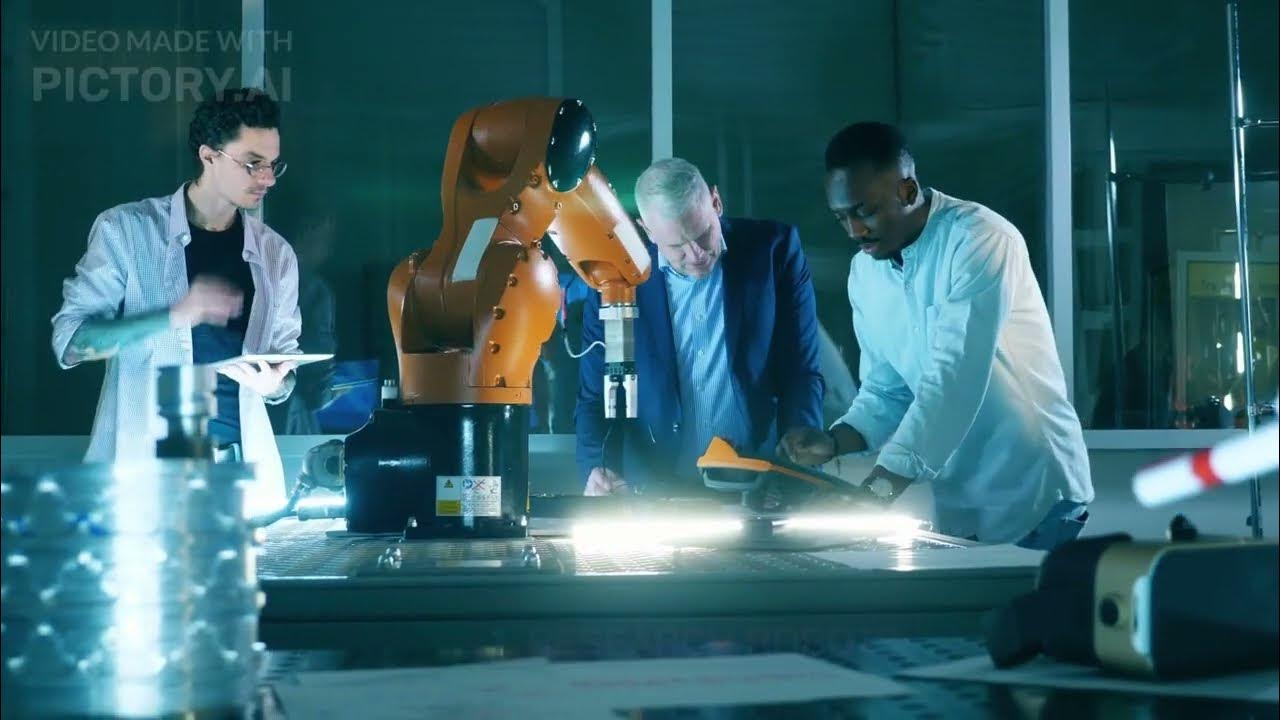NPTEL Course Introduction: Industrial Robotics - Theories for Implementation
Summary
TLDRThis course on industrial robotics offers an in-depth exploration of the mechatronics behind industrial robots, covering their structure, kinematics, and practical implementation in various applications. Students will learn about different actuators and sensors, the importance of closed-loop control systems, and the calibration needed for effective robot operation in diverse environments. Aimed at academics, researchers, and industry professionals, the course requires basic mathematics knowledge and promises to equip learners with the skills to not only understand robotic theories but also apply them in real-world industrial settings.
Takeaways
- 🤖 Industrial robots are primarily articulated arms with links, joints, and end-effectors for various tasks.
- 🔧 The course will focus on the mechatronics aspects of robots, including actuators, sensors, and control systems.
- 📚 Key types of actuators covered include DC motors, BLDC motors, stepper motors, and servo motors.
- 📏 Kinematics, including forward and inverse kinematics, will be an essential part of the curriculum.
- 📊 Practical implementation aspects will emphasize how to install and calibrate robots in different environments.
- 🛠️ Sensors such as position and proximity sensors will be discussed to create closed-loop control systems.
- 📈 The course aims to enhance participants' knowledge of implementing robots in industrial settings.
- 👩🏫 The target audience includes academics, researchers, and industry professionals looking to deepen their understanding of robotics.
- 📖 Prerequisites for the course include basic knowledge of mathematics, particularly trigonometry and calculus.
- 🚀 The instructor expresses excitement about teaching and encourages active participation for a successful learning experience.
Q & A
What is the main focus of the course 'Industrial Robotics Theories for Implementation'?
-The course focuses on the practical implementation of industrial robots, covering their construction, mechatronics, kinematics, and the various components that enable them to function effectively in industrial settings.
What are the primary components of industrial robots mentioned in the course?
-The primary components of industrial robots include joints, links, actuators, sensors, and end effectors (like grippers) that allow the robots to perform tasks.
How does the course differentiate between industrial robots and humanoid robots?
-While humanoid robots resemble humans with a full torso and limbs, industrial robots are typically designed with arms that consist of joints and links tailored for specific tasks in industrial applications.
What types of motors will be discussed in the course?
-The course will cover various types of motors, including DC motors, brushless DC motors, stepper motors (both unipolar and bipolar), and servo motors.
What role do sensors play in industrial robotics, as mentioned in the course?
-Sensors are critical for creating a closed-loop system in industrial robots, allowing them to measure parameters such as position, velocity, and torque, which are essential for accurate control.
What practical skills does the course aim to provide to its participants?
-The course aims to provide participants with practical skills in implementing robots in industrial settings, including calibration, installation, and understanding technical specifications for selecting appropriate robots.
What is the significance of forward and inverse kinematics in the context of industrial robots?
-Forward and inverse kinematics are essential for understanding how robots move and orient themselves in space, which is crucial for programming and operating robots effectively.
Who is the intended audience for the course?
-The intended audience includes students, researchers, and industry professionals seeking to enhance their knowledge and skills in industrial robotics and its applications.
What prerequisites are suggested for participants in this course?
-Participants are suggested to have a basic understanding of mathematics, including trigonometry and calculus, making it accessible to first-year engineering students.
What unique aspects of robotics implementation does the course aim to address?
-The course aims to address the unique aspects of implementing robots in real-world industrial applications, focusing on calibration and adaptation to different work environments.
Outlines

Esta sección está disponible solo para usuarios con suscripción. Por favor, mejora tu plan para acceder a esta parte.
Mejorar ahoraMindmap

Esta sección está disponible solo para usuarios con suscripción. Por favor, mejora tu plan para acceder a esta parte.
Mejorar ahoraKeywords

Esta sección está disponible solo para usuarios con suscripción. Por favor, mejora tu plan para acceder a esta parte.
Mejorar ahoraHighlights

Esta sección está disponible solo para usuarios con suscripción. Por favor, mejora tu plan para acceder a esta parte.
Mejorar ahoraTranscripts

Esta sección está disponible solo para usuarios con suscripción. Por favor, mejora tu plan para acceder a esta parte.
Mejorar ahoraVer Más Videos Relacionados
5.0 / 5 (0 votes)






